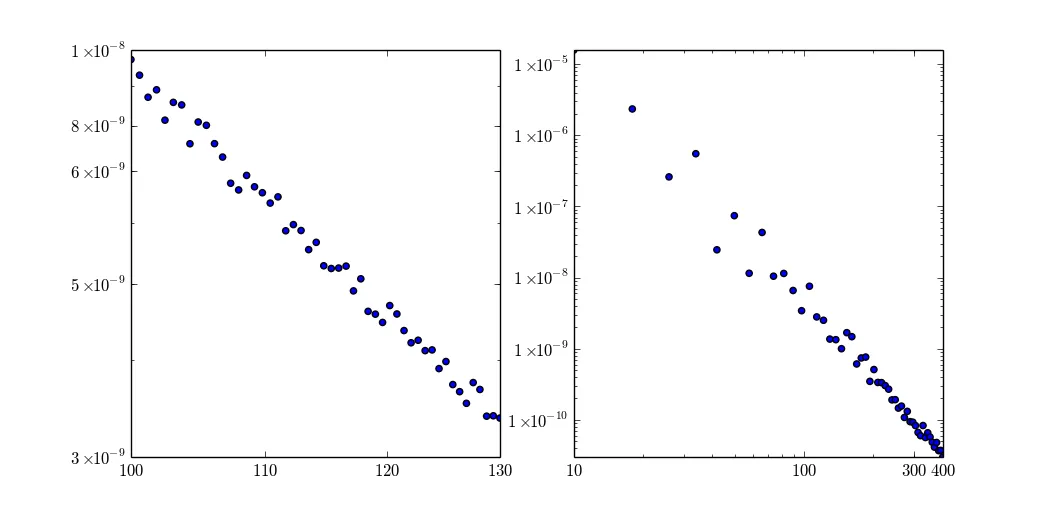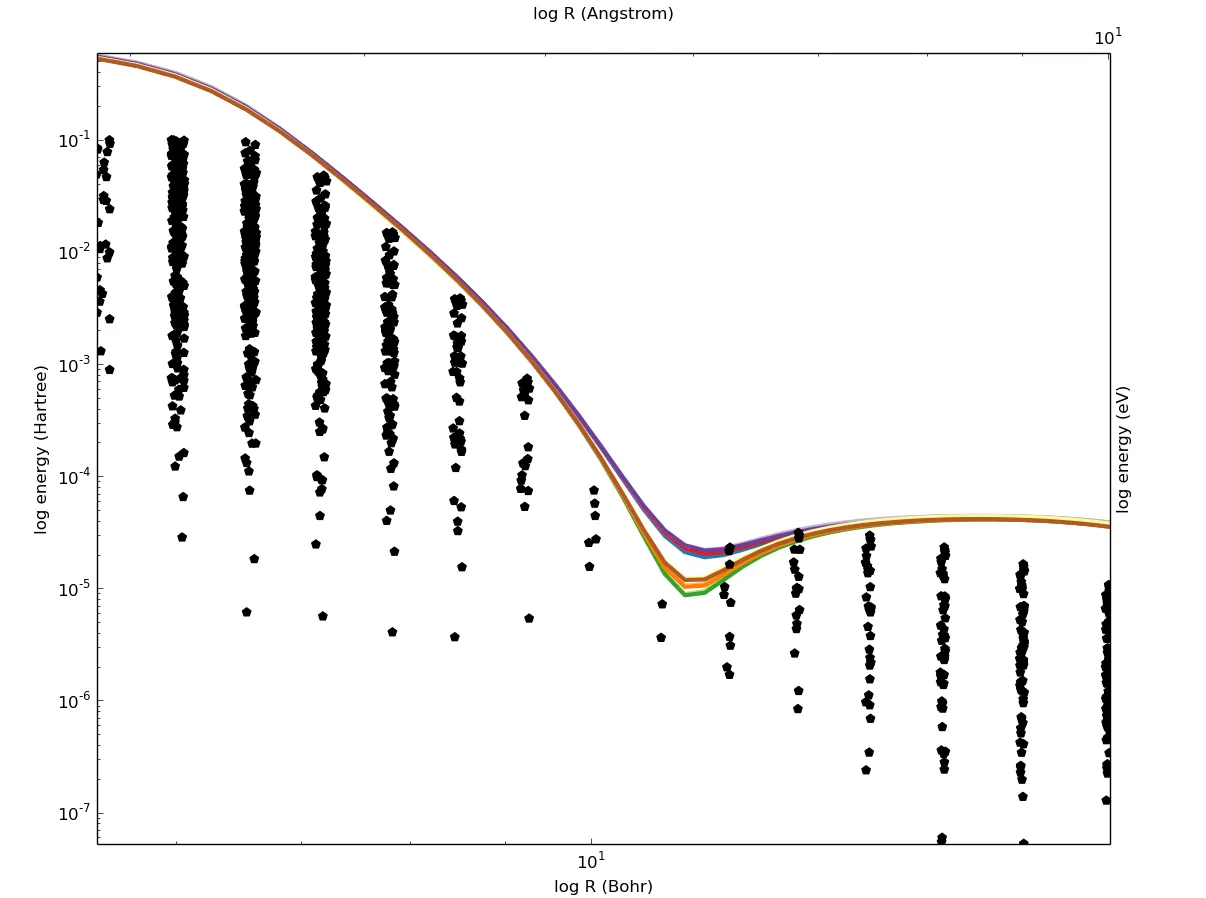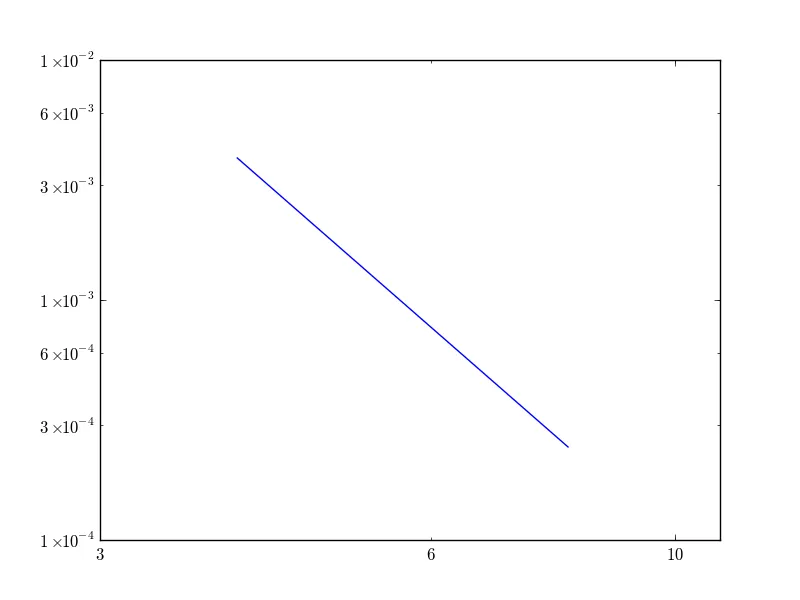最终,在这里和其他地方的其他答案的帮助下,我能够想出最好的解决方案是这样的:

在左侧,x和y只变化了一个数量级的一部分,标签相当好用。在右侧,x变化在1到2个数量级之间。这很好用,但是该方法已经达到极限。y值变化多个数量级,使用标准标签。
from matplotlib import ticker
from numpy import linspace, logspace, log10, floor
from warnings import warn
def round_to_n(x, n):
''' https://dev59.com/ZXA75IYBdhLWcg3wOWRd '''
return round(x, -int(floor(log10(abs(x)))) + (n - 1))
def ticks_log_format(value, index):
''' https://dev59.com/bnfZa4cB1Zd3GeqPVLc_ '''
pwr = floor(log10(value))
base = value / (10 ** pwr)
if pwr == 0 or pwr == 1:
return '${0:d}$'.format(int(value))
if -3 <= pwr < 0:
return '${0:.3g}$'.format(value)
if 0 < pwr <= 3:
return '${0:d}$'.format(int(value))
else:
return '${0:d}\\times10^{{{1:d}}}$'.format(int(base), int(pwr))
def calc_ticks(domain, tick_count, equidistant):
if equidistant:
ticks = logspace(log10(domain[0]), log10(domain[1]), num = tick_count, base = 10)
else:
ticks = linspace(domain[0], domain[1], num = tick_count)
for n in range(1, 6):
if len(set(round_to_n(tick, n) for tick in ticks)) == tick_count:
break
return list(round_to_n(tick, n) for tick in ticks)
''' small domain log ticks '''
def sdlt_x(ax, domain, tick_count = 4, equidistant = True):
''' https://dev59.com/ZXA75IYBdhLWcg3wOWRd '''
if min(domain) <= 0:
warn('domain %g-%g contains values lower than 0' % (domain[0], domain[1]))
domain = [max(value, 0.) for value in domain]
ax.set_xscale('log')
ax.set_xlim(domain)
ax.xaxis.set_major_formatter(ticker.FuncFormatter(ticks_log_format))
if log10(max(domain) / min(domain)) > 1.7:
return
ticks = calc_ticks(domain, tick_count = tick_count, equidistant = equidistant)
ax.set_xticks(ticks)
''' any way to prevent this code duplication? '''
def sdlt_y(ax, domain, tick_count = 5, equidistant = True):
''' https://dev59.com/ZXA75IYBdhLWcg3wOWRd '''
if min(domain) <= 0:
warn('domain %g-%g contains values lower than 0' % (domain[0], domain[1]))
domain = [max(value, 1e-8) for value in domain]
ax.set_yscale('log')
ax.set_ylim(domain)
ax.yaxis.set_major_formatter(ticker.FuncFormatter(ticks_log_format))
if log10(max(domain) / min(domain)) > 1.7:
return
ticks = calc_ticks(domain, tick_count = tick_count, equidistant = equidistant)
ax.set_yticks(ticks)
''' demo '''
fig, (ax1, ax2,) = plt.subplots(1, 2)
for mi, ma, ax in ((100, 130, ax1,), (10, 400, ax2,), ):
x = np.linspace(mi, ma, 50)
y = 1 / ((x + random(50) * 0.1 * (ma - mi)) ** 4)
ax.scatter(x, y)
sdlt_x(ax, (mi, ma, ))
sdlt_y(ax, (min(y), max(y), ))
show()
编辑:更新了一个选项,使标签等距(因此值为对数,但可见位置是等距的)。
 有没有一种方法可以获得合理数量的带标签的刻度,而不必为每张图手动指定它们?
有没有一种方法可以获得合理数量的带标签的刻度,而不必为每张图手动指定它们?
 有没有一种方法可以获得合理数量的带标签的刻度,而不必为每张图手动指定它们?
有没有一种方法可以获得合理数量的带标签的刻度,而不必为每张图手动指定它们?
 。
。